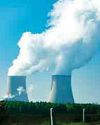
HYDROPROCESSING is a fundamental operation in refineries, encompassing two major unit types: Hydrotreaters and hydrocrackers. These units process gas oils of varying boiling points to produce a range of refined products with diverse qualities and performances.
Hydrotreaters are the most common processing units in modern refineries, constituting nearly half of global crude distillation capacity.
The number of hydrotreaters worldwide is almost three times that of distillation columns, and the average annual growth rate (AAGR) for these units is projected at 2.6 per cent until 2027. Hydrocrackers, though less common, are expected to grow at a higher AAGR of 6 per cent in the same period.
Countries like China, the US, India, Russia, and Saudi Arabia account for 56 per cent of global hydrocracking capacity as of 2022.
In Asia, nations including China, India, South Korea, Thailand, and Japan contribute to 90 per cent of the region’s hydrocracking capacity, which is anticipated to grow at 8.8 per cent AAGR until 2027.
“These developments are driven by rising fuel demand and increasingly stringent regulations aimed at producing cleaner fuels, including those derived from non-fossil feedstocks,” Michele Pietroni, Industry Manager – O&G and Chemical, Endress+Hauser, tells OGN energy magazine.
HYDROTREATING vs HYDROCRACKING: KEY DIFFERENCES
Although both hydrotreating and hydrocracking involve the use of high-pressure hydrogen and catalysts to remove contaminants from oil fractions, there are significant distinctions between the two processes.
Hydrotreating primarily removes sulphur, nitrogen, and oxygen without breaking carbon-to-carbon bonds, while hydrocracking breaks these bonds to produce lighter products with varied energy content and properties.
Another key difference lies in the oil conversion rates, where hydrocracking achieves lower conversion of feedstock into products.
هذه القصة مأخوذة من طبعة November 2024 من Oil and Gas News.
ابدأ النسخة التجريبية المجانية من Magzter GOLD لمدة 7 أيام للوصول إلى آلاف القصص المتميزة المنسقة وأكثر من 9,000 مجلة وصحيفة.
بالفعل مشترك ? تسجيل الدخول
هذه القصة مأخوذة من طبعة November 2024 من Oil and Gas News.
ابدأ النسخة التجريبية المجانية من Magzter GOLD لمدة 7 أيام للوصول إلى آلاف القصص المتميزة المنسقة وأكثر من 9,000 مجلة وصحيفة.
بالفعل مشترك? تسجيل الدخول

SABIC Exhibition to explore innovative tech in downstream
THE 14th edition of the region's largest petrochemical exhibition will be held from January 2630, 2025, in the Jubail Industrial City of Saudi Arabia.

New Emerson solution reduces energy costs
EMERSON has introduced its Energy Manager solution, a pre-engineered hardware and software offering designed to simplify industrial electricity monitoring.

WEG launches W80 AXgen motor
WEG, a global leader in motor manufacturing, has launched the W80 AXgen electric motor, designed for Original Equipment Manufacturers (OEMs).

AMETEK launches quartz microbalance analyser
AMETEK Process Instruments has introduced its next-generation quartz crystal microbalance (QCM) moisture analyser, the 3050OLV, a modern update to a product with over 25 years of reliability and performance.

Clariant catalysts to help cut emissions at Hengli's plant
CLARIANT, a sustainability-focused chemical company, has installed its EnviCat N2O-S catalyst at Hengli Petrochemical's nitric acid plant in Dalian, China.

TotalEnergies installs methane devices
AS part of its ambition to aim for near-zero methane emissions by 2030, TotalEnergies announces that the company is going a step further in the monitoring and reduction of its methane emissions with the deployment of continuous, real-time detection equipment at all of its operated Upstream sites.

More countries declare support for plans to triple nuclear power
AT the COP29 UN climate change conference in Baku, Azerbaijan, six additional countries El Salvador, Kazakhstan, Kenya, Kosovo, Nigeria, and Turkey have joined the call to triple global nuclear energy capacity by 2050, reported World Nuclear News.

Singapore allocates $74 million for green marine energy
SINGAPORE'S of S State, Alvin Tan, announced a SGD$100 million ($74 million) government investment to boost green growth in the marine and offshore energy sector over the next five years at OSEA 2024. The three-day tradeshow attracted over 500 exhibitors and 15,000+ attendees from 100 countries.

India, donor countries abandon energy transition partnership
INDIA will not proceed with the Just Energy Transition Partnership (JETP) initially discussed with donor countries like the US and Germany, aimed at aiding its transition from fossil fuels, particularly coal.

Aramco, Rongsheng in deal for Sasref expansion
SAUDI oil giant Aramco has anSA nounced that it has, along with its key affiliate Saudi Aramco Jubail ReCompany finery (Sasref) signed a development framework agreement with Chinese group Rongsheng Petrochemical at a special event in Beijing that paves the way for expansion of a vital Sasref faclity in Jubail.